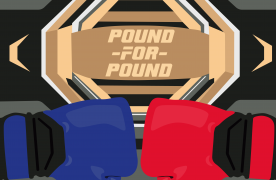High schoolers walk toward the gym, attempting to maintain composure. Vision blurred, steps belabored, this is the pinnacle of youthful bad behavior. School-sponsored dances have been an American ritual for years. They signal the beginning of a school year and football season, or the end of a childhood and first steps in the direction of adulthood.
Many school systems are taking the initiative to cancel their school dances in the wake of what is perceived to be excessive underage drinking. Walpole High School, located just outside of Boston, was one of those high schools, as outlined in a recent Wall Street Journal article. Principal Stephen Imbusch pointed to student alcohol consumption as a primary motivator behind canceling all dances, except the junior and senior prom.
In a letter republished by The Boston Globe, Imbusch outlined the behavior of students at the dance under the influence as “students falling around the dance floor being held up by their peers; students throwing up in the bathroom; students dancing in ways that shocks the teachers and the adults who are in charge of educating and shaping the future of those students.”
School dances are, for many, an escape. From parents, siblings, responsibilities. Enduring a demanding schedule for a student is incredibly stressful, and a time to unwind with friends, in an independent manner away from watchful eyes, is necessary. That being said, in high school in particular, such events are inevitably accompanied by alcohol.
Underage drinking, especially in high school, is still a sexy and taboo thing to do. The more the merrier, jeered on by the possibility of being caught and reveling in the risk. The fact of the matter is that this behavior is still going to carry on, school dance or not. Yes, special events may encourage debauchery, underage drinking will still carry on. More than anything, American youths are yearning for rebellion in some manner or another. Bad behavior will inevitably happen, whether it is in a school gymnasium or a beach house or a basement just down the street.
Though underage drinking seems rampant and universal to many supervisors, Imbusch in particular, many students do not drink before school dances. School-sponsored events are attended by more than just students who slam shots before walking onto school property. These events are universal and a few bad apples don’t always spoil the bunch. Completely shutting down dances is unfair and bureaucratic, especially for those who weren’t planning on drinking.
Heightened security is another factor in the cancellation debate. Imbusch stated that breathalyzing students would “take an inordinate amount of time.” Many high schools breathalyze their students upon entry to school dances; it is not unrealistic and prevents students from drinking heavily before entering the dance. Yes, it does not “detect the alcohol in kid’s pockets,” but it is highly unlikely and nearly impossible to smuggle a bottle of Jack Daniels into a dance if security is adequate and thorough.
Though highly noble of Imbusch to begin a crusade against underage drinking, canceling a school dance is not a way to start a campaign.
Furthermore, the culture of underage drinking in our nation is one that needs further examination, as we touched on in a previous editorial. To combat underage drinking and resume school functions, we must turn to policy and cultural perception. Let Walpole dance; they’re going to do it anyway.













